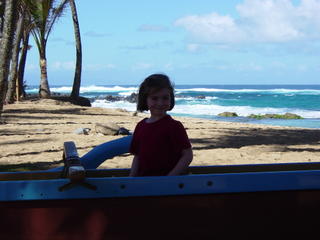Midterm Project
 Seemingly overnight, Nike has been given permission to rename the historic square of Karlsplatz, Vienna to Nikeplatz. The reaction from people ranges from quiet acceptance to rampant disgust. Has corporate branding finally gone too far?
Seemingly overnight, Nike has been given permission to rename the historic square of Karlsplatz, Vienna to Nikeplatz. The reaction from people ranges from quiet acceptance to rampant disgust. Has corporate branding finally gone too far?"You want to wear it, why shouldn't cities too?"With their latest project nikeground.com the artist's 0100101110101101.org gave a truly subversive performance. By literally tricking the city of Vienna with their flashy website and aesthetically pleasing, gadget-ridden, info box, the artists' displayed the power of multimedia. The project nikeground.com, played with the minds of the citizens of Vienna by employing three of David Ross' "distinctive Qualities of Net.Art" This work of art, this performance piece, is one of the many projects this group has embarked upon to relay an even more important message, than the illusive quality of technology.
The outrage, acceptance, disbelief, all of the reactions received from the supposed renaming of Karlsplatz illustrate the power of multimedia. In David Ross' lecture about net.art, twenty or so qualities were outlined to qualify a work displayed on the web as art. As a form of multimedia, the art does ascribe to most of these qualities, but seems to focus on epitomizing these three; (1) Digital technology affords the possibilities of simulation and construction of truly credible images, (2) the shifting of identities, (3) net.art is anarchic and dangerous (Ross). The artists' 0100101110101101.org, through nikeground.com create a work of art that produces such credible imagery that the user cannot help but accept its validity, even if its message seems erroneous. Vienna would never allow Nike to rename one of its most historic sites, or if the price was right would it? People are bombarded with images of the web everyday. When a website has such an intricate layout and a professional veneer, the tendency is to believe whatever information is given
The entire performance depends upon certain reactions to multimedia. What is perhaps the most interesting aspect of this is that the artists' are trying to create dialogue that puts into question these behaviors. It is because of the Internet that such a project could be embarked upon. Without this medium, it would be hard to create a work that can be experienced by an entire city. The artist then can use this medium to pass the message on the entire world. The Internet allows the artist to spread messages that might have been censored by other popular forms of media. The Internet however has a dark side. Nikeground.com explores the darker side of blurring the lines of reality and fiction. In this, nikeground.com is in the same vein as jodi.org. The Internet has such powers and such capabilities, it is easy to focus on the good and completely ignore some of the inherent dangers of the web. The very qualities that he internet is praised for possessing are the same qualities that can potentially give the most trouble.

